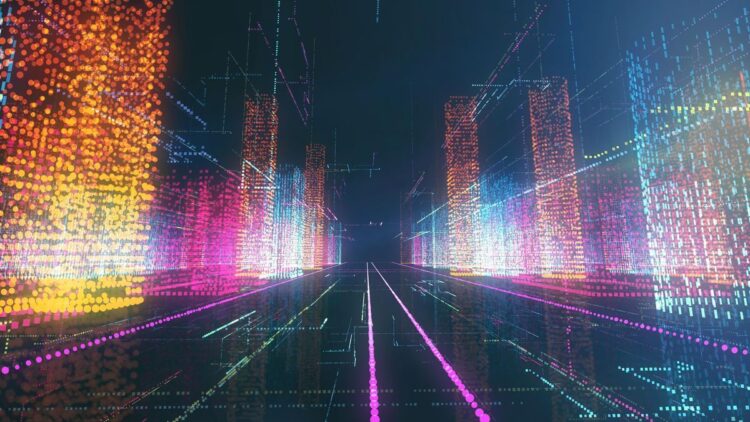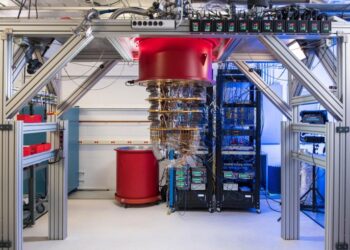The digital revolution has continually sought to bridge the gap between our physical reality and the virtual realms we create. From flat screens to immersive 3D experiences, the journey has been relentless. Now, we stand at the precipice of a new era, one defined by spatial computing. This groundbreaking technological paradigm extends beyond mere virtual reality, integrating digital content directly into our physical environments and allowing us to interact with it naturally, much like we do with real-world objects. It’s about designing and experiencing immersive digital worlds that seamlessly blend with, augment, and sometimes even replace our physical surroundings, unlocking unprecedented levels of interaction, collaboration, and understanding. This isn’t just about viewing digital content; it’s about living within it, transforming how we work, play, learn, and connect.
Beyond Screens and Into Space
To fully grasp the revolutionary potential of spatial computing, it’s essential to trace its lineage from earlier forms of human-computer interaction and appreciate the fundamental shift it represents.
A. The Reign of Flat Screens: 2D Interactions
For decades, our primary interface with the digital world has been the flat, two-dimensional screen. From early computer monitors to today’s high-resolution displays, interaction has largely been confined to a 2D plane.
- Desktop Computing: The advent of the graphical user interface (GUI) with desktops, mice, and keyboards revolutionized personal computing. Users navigated folders, clicked icons, and typed commands on a flat screen.
- Mobile Devices: Smartphones and tablets brought computing into our pockets, offering touch-based interactions on smaller, portable flat screens. While incredibly convenient, the fundamental interaction remained 2D.
- Limitations of 2D: Despite their utility, flat screens create a barrier between the user and the digital content. Interactions are indirect, often requiring translation from physical movements (mouse clicks, finger taps) to on-screen actions. The sense of presence and immersion is limited, restricting collaborative potential and natural engagement with complex data.
B. Early Immersion Attempts: VR and AR Beginnings
The desire for more immersive experiences led to the early exploration of virtual and augmented realities.
- Virtual Reality (VR) — Full Immersion: Early VR systems aimed to completely replace the user’s view of the physical world with a simulated one. Head-mounted displays (HMDs) transported users to entirely digital environments. While offering a strong sense of presence, early VR struggled with bulky hardware, high costs, motion sickness, and a lack of real-world integration. It created a separate digital world.
- Augmented Reality (AR) — Digital Overlay: AR sought to overlay digital information onto the real world, typically through smartphone cameras or specialized glasses. Think of Pokémon Go or Snapchat filters. This brought digital content into our physical context, but interactions were often limited to 2D overlays on a screen, lacking true spatial understanding.
- The Challenge of Integration: Both early VR and AR, while promising, often felt like isolated experiences. VR completely cut you off from your surroundings, making it impractical for everyday use. AR was mostly a visual overlay, without deep understanding of the physical space itself or natural interaction with the digital content within that space.
C. The Advent of Spatial Computing: Blending Worlds
Spatial computing represents the true convergence of the physical and digital. It’s a technological framework that allows digital systems to understand and interact with the physical world, and for users to interact with digital content that is anchored and persistent in that physical world.
- Environmental Understanding: Unlike basic AR, spatial computing devices (like Apple Vision Pro, Meta Quest, Microsoft HoloLens) build a comprehensive 3D map of the user’s physical environment. They understand surfaces, objects, depth, and lighting. This allows digital content to be seamlessly integrated, respecting real-world physics (e.g., a virtual object resting on a real table).
- Natural Interaction: Interaction moves beyond clicks and taps to natural gestures (hand tracking), eye-gaze, and voice commands. Users can “grab” virtual objects, “place” them on physical surfaces, or “walk around” them as if they were real.
- Persistent Digital Content: Digital objects are not fleeting overlays. They can remain anchored in a specific physical location even when the user leaves and returns. Imagine virtual screens in your living room that stay exactly where you left them, or digital instructions hovering over a machine in a factory.
- Blended Reality (MR/XR): Spatial computing encompasses and merges elements of VR, AR, and mixed reality (MR) into Extended Reality (XR). It allows for a continuum of experiences, from fully immersive virtual worlds to augmented reality applications that deeply understand and interact with the physical environment.
- Multi-Sensory Experiences: Beyond visuals, spatial computing integrates spatial audio (sound that emanates from the perceived location of virtual objects), haptic feedback, and even olfactory or thermal cues to create a truly immersive and believable blended reality.
This comprehensive understanding and interaction with both physical space and digital content are what define spatial computing, enabling a fluid, intuitive bridge between our tangible world and immersive digital worlds.
Core Components and Characteristics of Spatial Computing Platforms
A robust spatial computing platform is a complex interplay of hardware, software, and advanced algorithms designed to enable seamless interaction between users, digital content, and the physical environment.
A. Advanced Sensing and Environmental Mapping
The foundation of spatial computing lies in its ability to accurately perceive and understand the physical world.
- Depth Sensors (LiDAR, ToF): These sensors measure the distance to objects, creating precise 3D point clouds and depth maps of the environment. This allows the system to understand the geometry of rooms, furniture, and other physical objects.
- Cameras (RGB and Infrared): High-resolution RGB cameras capture visual information, enabling the rendering of digital content that matches the lighting and textures of the real world. Infrared cameras can track hand gestures and eye movements.
- Inertial Measurement Units (IMUs): Accelerometers and gyroscopes track the user’s head and body movements, ensuring that virtual objects remain stable and anchored in the perceived space, even as the user moves.
- Simultaneous Localization and Mapping (SLAM): A sophisticated algorithm that simultaneously builds a map of an unknown environment while tracking the user’s location within that map. SLAM is crucial for accurate digital content anchoring and persistent experiences.
B. High-Performance Processing Units
Rendering complex 3D digital content, performing real-time environmental mapping, and processing natural user interactions require immense computational power.
- Specialized Processors: Spatial computing devices often integrate custom System-on-Chips (SoCs) with powerful CPUs, GPUs, and Neural Processing Units (NPUs) optimized for graphics rendering, AI workloads (like object recognition), and sensor data processing.
- Low Latency Processing: To prevent motion sickness and ensure a fluid user experience, the system must process sensor data and render visuals with extremely low latency (often below 20 milliseconds). This demands optimized hardware and software pipelines.
- Edge Computing Integration: For some applications, particularly in industrial settings or large-scale simulations, processing might be distributed, with some computation happening on the device (edge) and more intensive tasks offloaded to cloud infrastructure.
C. Immersive Displays and Audio
The visual and auditory components are crucial for creating a convincing sense of presence and immersion.
- High-Resolution Displays: Devices use high pixel-density displays (e.g., micro-OLED) to create sharp, clear visuals that minimize the “screen door effect” (seeing individual pixels).
- Wide Field of View (FoV): A wider field of view helps in creating a more natural and encompassing visual experience, making the digital content feel more integrated into the peripheral vision.
- Spatial Audio: Advanced audio processing creates a 3D soundscape where sounds emanate from the perceived location of virtual objects, enhancing realism and helping users locate digital content in space.
- Passthrough Video: For mixed reality, high-quality cameras capture the real world and display it on the internal screens, seamlessly blending it with rendered digital content.
D. Natural User Interfaces (NUIs)
Spatial computing moves beyond traditional input devices towards more intuitive and natural forms of interaction.
- Hand Tracking and Gestures: Users can interact with digital objects using natural hand movements, such as pinching to select, swiping, or grasping.
- Eye Tracking and Gaze Input: The system tracks the user’s eye movements, allowing for selection simply by looking at a virtual object (gaze-based interaction) or providing contextual information based on where the user is focusing.
- Voice Commands: Natural language processing allows users to issue commands or search for information using their voice, further streamlining interaction.
- Haptic Feedback: Haptic devices (e.g., controllers, gloves, or integrated into the headset) provide tactile feedback, simulating the feel of virtual objects or surfaces, enhancing the sense of realism.
E. Persistent Digital Content Management
Unlike ephemeral digital experiences, spatial computing enables digital content to be persistent and anchored in specific physical locations.
- Scene Graphs and Anchors: The system maintains a digital map of the environment (a scene graph) and allows digital objects to be permanently anchored to specific points or planes within that map.
- Cloud Synchronization: For multi-user experiences or shared digital spaces, the state of the digital content and its anchors can be synchronized across devices and users via cloud services, ensuring everyone sees the same shared reality.
- Collaboration Tools: Built-in features for shared experiences, allowing multiple users to interact with the same digital objects in the same physical space in real-time.
Transformative Advantages of Spatial Computing
The shift to spatial computing is not just a technological curiosity; it offers profound advantages that are set to revolutionize numerous aspects of our professional and personal lives.
A. Enhanced Immersion and Presence
Spatial computing delivers an unparalleled sense of immersion and presence, making digital content feel truly tangible and integrated into our world.
- Natural Interaction: Moving from indirect input (mouse, keyboard) to direct, intuitive gestures and eye movements makes interacting with digital objects feel as natural as interacting with physical ones. This reduces cognitive load and increases engagement.
- Realistic Blending: Advanced environmental understanding (depth, lighting, occlusion) allows digital objects to appear seamlessly integrated into the physical world, enhancing believability and reducing visual discord.
- Sensory Richness: Integration of spatial audio, haptics, and future multi-sensory feedback creates a deeply immersive experience that engages more senses, making virtual experiences feel more real.
B. Revolutionized Collaboration and Communication
Spatial computing fundamentally transforms how individuals and teams collaborate, especially across geographical distances.
- Shared Spatial Experiences: Teams can collaborate on digital models (e.g., product prototypes, architectural designs) that are anchored in a shared physical space. Multiple users can view, manipulate, and discuss the same digital content together, as if physically present.
- Remote Presence: Employees can feel “present” in a remote meeting, with virtual avatars or even volumetric video representations of distant colleagues appearing in their physical workspace, enhancing non-verbal communication and engagement.
- Immersive Training and Education: Spatial environments allow for highly interactive and realistic training simulations (e.g., medical procedures, equipment operation, emergency response) where learners can practice in a safe, virtual environment with digital tools and objects that behave realistically. This can dramatically improve learning outcomes and retention.
- Design Review and Prototyping: Architects, engineers, and designers can virtually walk through and interact with their designs at full scale, collaborating with clients and stakeholders in a shared immersive space, identifying issues and iterating much faster than with traditional methods.
C. Unprecedented Productivity and Efficiency Gains
By blending digital information directly into the workspace, spatial computing offers significant productivity enhancements across various industries.
- Contextual Information Overlay: Workers can have critical information (e.g., schematics, work instructions, performance metrics) overlaid directly onto the physical machinery or environment they are interacting with. This reduces the need to look away at screens, minimizes errors, and speeds up tasks in manufacturing, maintenance, and field service.
- Optimized Workflows: Digital guides and assistance can lead workers through complex procedures step-by-step, ensuring accuracy and efficiency. This is particularly valuable in complex assembly lines or for intricate repair tasks.
- Hands-Free Operation: With gesture and voice control, workers can interact with digital tools and information while keeping their hands free for physical tasks, improving safety and dexterity in industrial settings.
- Reduced Travel and Logistics: Remote collaboration and virtual prototyping can significantly reduce the need for physical travel for meetings, inspections, or design reviews, saving time, cost, and environmental impact.
D. Enhanced Data Visualization and Understanding
Spatial computing transforms abstract data into tangible, interactive 3D visualizations, leading to deeper insights.
- Immersive Data Exploration: Instead of viewing data on a flat chart, users can walk through, manipulate, and interact with complex datasets in a 3D space. Imagine navigating a city’s traffic flow in a virtual model or exploring molecular structures in true 3D.
- Contextualized Analytics: Data can be displayed directly in the physical context it relates to (e.g., energy consumption data hovering over a specific building, performance metrics appearing on a machine), making it more intuitive to understand and act upon.
- Complex System Monitoring: Operators can visualize the real-time status of complex systems (e.g., power grids, factory floors) as a 3D overlay, quickly identifying anomalies or areas of concern that might be missed on 2D dashboards.
E. New Avenues for Entertainment and Consumer Experiences
Beyond enterprise applications, spatial computing promises to redefine entertainment, gaming, and social interactions.
- Immersive Gaming: Games that integrate digital elements directly into the player’s physical environment, allowing them to interact with virtual characters and objects that react to real-world surroundings.
- Enhanced Social Interaction: Virtual avatars or digital elements can overlay real-world social gatherings, enabling new forms of mixed-reality social experiences.
- Personalized Digital Spaces: Users can customize their physical living spaces with persistent virtual screens, artworks, or interactive elements that only they (or invited guests) can see.
- Retail and E-commerce: Customers can virtually try on clothes, place furniture in their homes, or interact with digital product replicas before purchasing, enhancing the online shopping experience.
Core Technologies Enabling Spatial Computing’s Ascent
The emergence of robust spatial computing platforms is a testament to the convergence and maturation of several critical underlying technologies.
A. Advanced Hardware: Headsets and Wearables
The primary interface for spatial computing is increasingly sophisticated hardware.
- Head-Mounted Displays (HMDs): Devices like Apple Vision Pro, Meta Quest series, and Microsoft HoloLens combine high-resolution displays, powerful internal processors, and an array of sensors to map the environment and track user interaction.
- Next-Gen Sensors: Evolution of LiDAR, Time-of-Flight (ToF) cameras, high-fidelity RGB cameras, and advanced IMUs that provide precise, real-time understanding of physical space, hand movements, and eye gaze.
- Specialized Processors: Custom silicon designed for low-latency graphics rendering, concurrent sensor data processing, and on-device AI inference (e.g., Apple’s R1 chip, Meta’s custom silicon for Quest).
- Compact and Ergonomic Designs: Continuous efforts to make these devices lighter, more comfortable, and socially acceptable for extended wear.
B. Sophisticated Software and APIs
The software stack is equally crucial, translating sensor data into actionable insights and enabling rich interactive experiences.
- Spatial Mapping Engines: Software frameworks (like ARKit, ARCore, Unity MARS, Unreal Engine’s AR capabilities) that process sensor data to build a persistent, semantic 3D map of the physical environment.
- Computer Vision and AI: Advanced computer vision algorithms for object recognition, pose estimation, hand tracking, and eye tracking. Machine learning models run on dedicated NPUs to enable intelligent understanding of the user’s intentions and context.
- Rendering Engines: Real-time 3D rendering engines (Unity 3D, Unreal Engine) optimized for spatial computing, handling complex graphics, lighting, and occlusion to seamlessly blend digital content with the real world.
- Spatial UI/UX Frameworks: New paradigms for user interface and user experience design that account for 3D interaction, gaze-based input, and natural gestures, moving away from flat-screen metaphors.
- Cloud-Based Spatial Services: Backend services that enable persistent digital content, multi-user shared experiences, large-scale spatial mapping, and offloading of heavy computational tasks to the cloud.
C. High-Bandwidth, Low-Latency Connectivity
Seamless integration of digital content requires robust network infrastructure.
- 5G and Beyond: Ultra-reliable low-latency communication (URLLC) capabilities of 5G networks and future 6G technologies are essential for streaming high-fidelity 3D content, synchronizing multi-user experiences, and enabling edge computing scenarios where some processing happens in the cloud.
- Wi-Fi 6E/7: High-speed local wireless networks are critical for managing large data transfers between devices and local edge compute nodes, particularly in enterprise or industrial settings.
- Edge Computing Infrastructure: Distributing computational power closer to the user or data source reduces latency and network load, crucial for real-time spatial interactions and large-scale deployments like smart cities.
D. Content Creation Tools and Ecosystems
The creation of compelling spatial experiences requires specialized tools and a growing ecosystem of developers and content creators.
- 3D Modeling and Asset Creation Tools: Integration with existing 3D modeling software (e.g., Blender, Maya, ZBrush) and new tools specifically designed for spatial content creation.
- Photogrammetry and Lidar Scanning: Tools and techniques to capture real-world objects and environments as high-fidelity 3D models, enabling the creation of digital twins of physical spaces.
- Developer SDKs and Frameworks: Comprehensive Software Development Kits (SDKs) that provide developers with APIs and tools to build spatial computing applications across different platforms.
- Marketplaces and Distribution Platforms: Digital marketplaces for spatial computing applications and content, mirroring the app stores of mobile computing.
Challenges on the Path to Widespread Spatial Computing Adoption
Despite its immense promise, the widespread adoption of spatial computing faces several significant hurdles that the industry is actively working to overcome.
A. Hardware Limitations and Cost
Current spatial computing hardware, while impressive, still faces constraints.
- Cost: Devices like the Apple Vision Pro (>$3,000) are prohibitively expensive for most consumers and even many businesses, limiting widespread adoption. Costs need to decrease significantly for mass market penetration.
- Form Factor and Ergonomics: While improving, many devices are still relatively bulky, heavy, or require external battery packs, making them less comfortable for extended wear or everyday use. The goal is stylish, lightweight glasses.
- Battery Life: The high computational demands often lead to limited battery life, requiring frequent recharging or external power sources.
- Field of View (FoV): While improving, the FoV on many devices is still narrower than natural human vision, creating a “binocular” effect that can break immersion.
B. Content Creation and Developer Ecosystem
Creating compelling and useful spatial computing experiences is significantly more complex than developing for 2D screens.
- 3D Content Creation Pipeline: Developing high-quality 3D assets, animations, and interactive experiences requires specialized skills, time, and resources. The tooling is maturing but still more complex than 2D.
- Lack of Universal Standards: The nascent nature of the industry means a fragmented ecosystem with different platforms, SDKs, and interaction paradigms, making it challenging for developers to create cross-platform experiences.
- User Experience (UX) Design: Designing intuitive and comfortable user interfaces for 3D spatial interactions is a new and evolving field, requiring new design principles and best practices. Avoiding motion sickness is crucial.
- Talent Gap: A shortage of experienced developers, designers, and 3D artists specializing in spatial computing poses a challenge to content creation.
C. Privacy, Security, and Ethical Concerns
Spatial computing devices capture vast amounts of sensitive data about our environments and ourselves, raising significant concerns.
- Environmental Data Privacy: Devices continuously map and understand our physical spaces (homes, offices). Who owns this data? How is it secured? What prevents unauthorized access or mapping?
- Biometric Data: Eye tracking and hand tracking collect highly personal biometric data. Ensuring the privacy and security of this data is paramount.
- Security Vulnerabilities: The integrated nature of hardware, software, and cloud services creates new attack vectors. A compromised spatial computing device could potentially grant attackers access to sensitive real-world information or control over digital interactions.
- Social and Ethical Implications: Concerns about digital advertising in physical space, the blurring of reality, potential for addiction, and the impact on social interaction and human connection need careful consideration and responsible development.
D. Performance and Latency Management
Maintaining the illusion of digital content seamlessly integrated into the real world demands extremely high performance and ultra-low latency.
- Computational Overhead: Real-time environmental mapping, object recognition, user tracking, and high-fidelity rendering are computationally intensive, challenging even the most powerful mobile processors.
- Network Dependency: For shared experiences or cloud-rendered content, network latency can break immersion and cause a jarring experience. Reliable, low-latency 5G/Wi-Fi is essential but not universally available.
E. Social Acceptance and Cultural Integration
For spatial computing to become ubiquitous, it needs to overcome social and cultural barriers.
- Public Perception: Early bulky designs or privacy concerns can lead to public skepticism or resistance. Devices need to become less conspicuous and more seamlessly integrated into daily life.
- Cultural Norms: The idea of people wearing headsets in public or having digital overlays in shared spaces might challenge existing social norms and etiquette.
- Digital Divide: Access to these advanced technologies could exacerbate existing digital divides if they remain expensive or require high-end infrastructure.
The Future Trajectory of Spatial Computing: A Blended Reality
The trajectory of spatial computing is towards a future where the lines between the physical and digital are increasingly blurred, creating truly immersive and intelligent environments.
A. Ubiquitous and Invisible Hardware
Future spatial computing devices will become significantly more lightweight, stylish, and eventually, virtually invisible.
- Everyday Eyewear: The ultimate goal is to integrate spatial computing capabilities into standard eyeglasses, offering all-day wearability and seamless blending of realities without standing out.
- Contact Lenses: Further into the future, direct integration into contact lenses or even neural interfaces could provide an even more seamless and direct digital experience.
- Ambient Spatial Intelligence: Environmental sensors and displays will be embedded into our surroundings (smart cities, smart homes, smart factories), creating an ‘ambient’ spatial computing layer that responds intelligently to our presence and needs, without requiring dedicated wearables.
B. Advanced AI for Contextual Intelligence
Artificial intelligence will be central to making spatial computing truly intuitive and proactive.
- Predictive Interaction: AI will anticipate user needs and actions, proactively presenting relevant digital information or tools based on context, location, and past behavior.
- Personalized Digital Avatars and Agents: Highly sophisticated AI-powered digital companions that can interact naturally with users in spatial environments, offering assistance, education, or entertainment.
- Generative AI for Content: AI will dynamically generate and adapt spatial content based on user preferences, environmental conditions, or specific tasks, allowing for highly personalized and dynamic immersive experiences.
- Semantic Environmental Understanding: AI will not just map the environment geometrically but understand the meaning of objects and spaces (e.g., recognizing a kitchen, understanding a desk is for work), enabling more intelligent and context-aware digital interactions.
C. The Open Spatial Web and Metaverse Standards
The evolution of spatial computing will drive the creation of a persistent, interconnected “Spatial Web” or “Metaverse,” requiring open standards and interoperability.
- Universal Scene Description (USD): Standards like Pixar’s USD (already adopted by Apple for Vision Pro) will become crucial for enabling interoperability and portability of 3D content across different spatial computing platforms.
- Open XR: Efforts to standardize the XR development stack will accelerate, making it easier for developers to build applications that run across a variety of hardware.
- Decentralized Spatial Data: Blockchain and Web3 technologies could play a role in managing ownership, identity, and persistence of digital assets within shared spatial environments, fostering a more open and decentralized metaverse.
D. Industry-Specific Transformation and Hyper-Specialization
While consumer applications will grow, the most profound impacts will continue to be seen in specialized industry verticals.
- Industrial Metaverse: Fully integrated digital twins of factories, construction sites, or power plants, where operators and robots interact with live data overlays for maintenance, optimization, and remote control.
- Medical Digital Twinning: Creating “digital twins” of organs or even entire human bodies for highly personalized diagnostics, surgery planning, and drug development, potentially allowing doctors to perform ‘virtual’ surgeries before touching a patient.
- Retail and Design Simulation: Customers designing their homes in a virtual replica, trying on clothes virtually, or architects collaborating on city-scale models that dynamically respond to environmental and social data.
E. Focus on Ethical AI and Responsible Development
As spatial computing becomes more pervasive and sophisticated, the emphasis on ethical AI and responsible development will intensify. This includes:
- Privacy by Design: Building privacy safeguards directly into the core architecture of spatial computing devices and platforms.
- Bias Mitigation: Actively working to prevent algorithmic bias in AI models that perceive and interpret user behavior and environments.
- Digital Well-being: Designing experiences that promote healthy use patterns and prevent addiction or negative psychological impacts.
- Inclusive Design: Ensuring that spatial computing technologies are accessible and beneficial to people of all abilities and backgrounds.
Conclusion
Spatial computing is not just the next step in computing; it is a fundamental redefinition of our relationship with digital information. By seamlessly integrating digital content into our physical environments and enabling natural, intuitive interactions, it promises to unlock unprecedented levels of efficiency, collaboration, and immersion across every facet of life. From transforming industrial workflows and revolutionizing healthcare to creating entirely new forms of entertainment and social connection, the power of virtual replicas is poised to reshape our world.
While the journey to widespread adoption involves significant challenges in hardware design, content creation, and addressing critical ethical considerations like privacy, the relentless pace of innovation suggests a future where digital worlds are no longer confined to flat screens but are dynamically interwoven into the fabric of our everyday reality. This isn’t just about experiencing immersive digital worlds; it’s about building a future where information is not just seen but truly lived, turning our physical surroundings into an intelligent, interactive canvas powered by spatial computing.











